1. The BF Goodrich pressure suit
The suit was constructed in 1935 by BF Goodrich for aviator Wiley Post. It’s fundamental design, incorporating an inner rubber bladder and rubberized fabric outer layer glued to a frame with joints, was the conceptual foundation for all modern pressure suits. This particular unit was worn at an altitude of 50,000 feet.
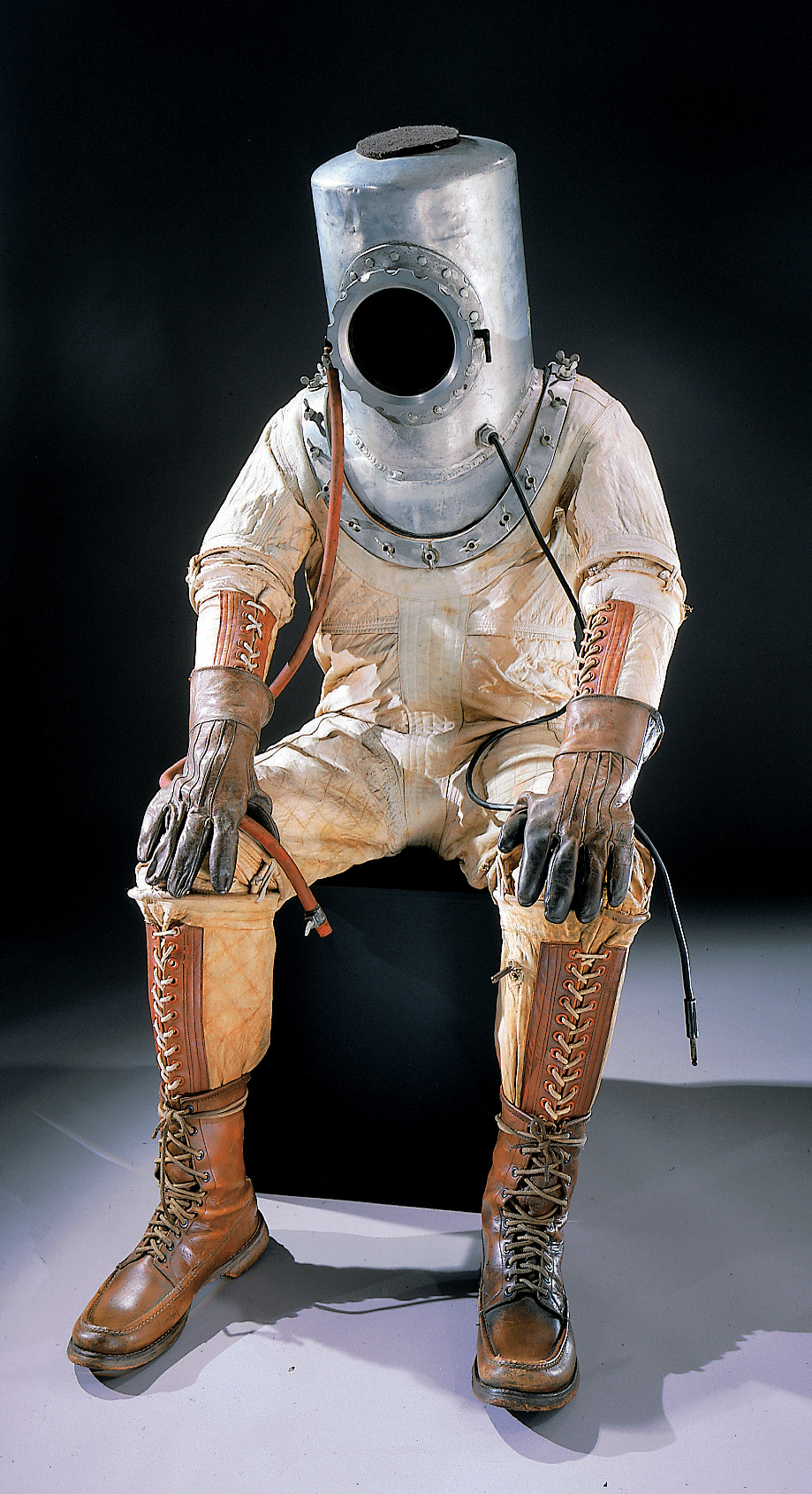
2. XMC-2
The XMC-2 suit was produced by the David Clark Company and tested in 1955 by Scott Crossfield as part of the X-15 program. It was worn on many of the early X-15 flights before later being modified to the MC-2 suit.
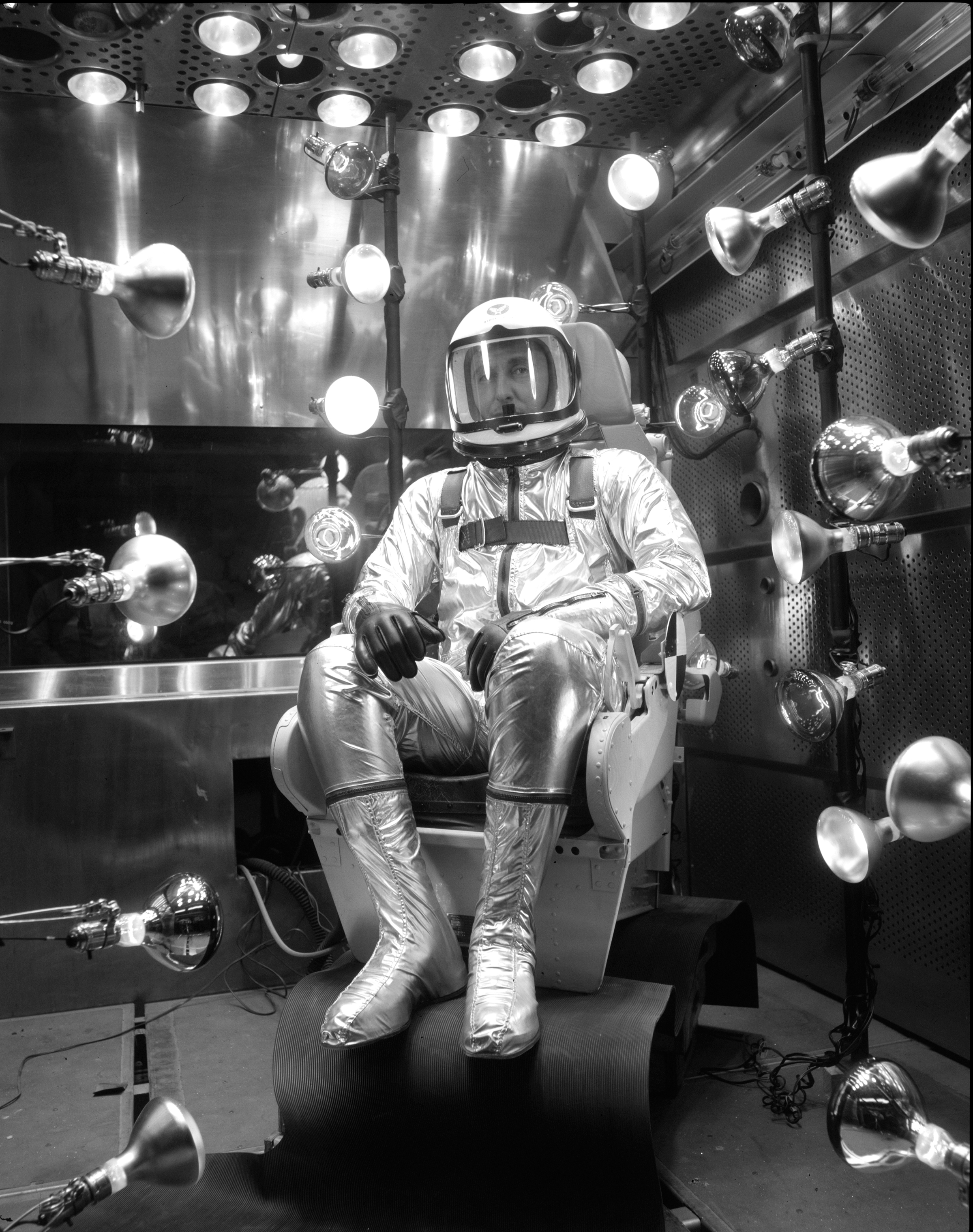
3. MC-2 suit
Worn by Joe Walker, and later by Neil Armstrong, the MC-2 was worn in high-altitude flights near the boundary between space and the last atmosphere of atmosphere. The image above shows Joe Walker wearing his suit as he prepared to take the X-15 100 km above ground level.
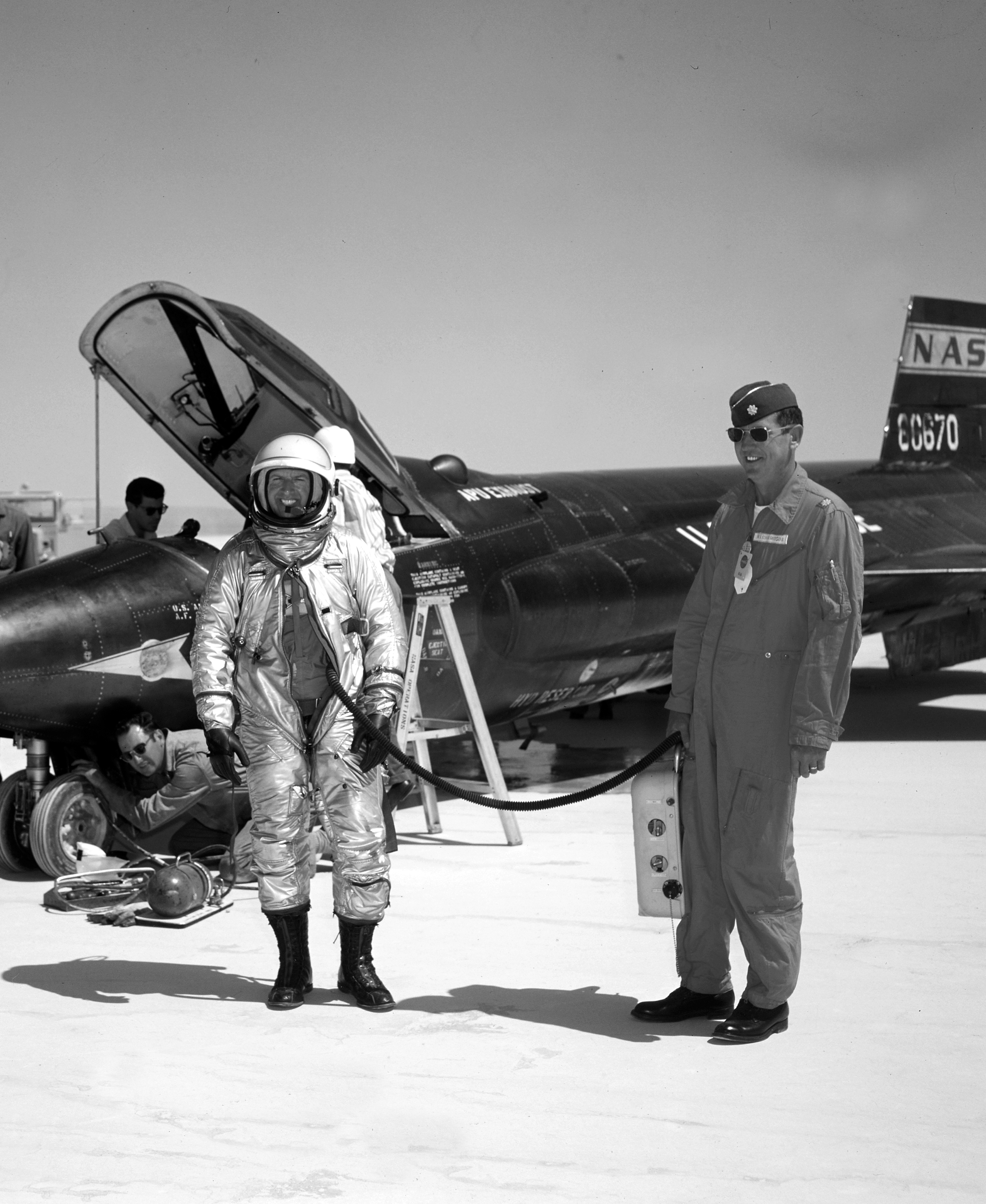
4. Navy MK IV
The MK IV spacesuit was selected by NASA for the high-altitude Project Mercury mission. Astronaut Alan Shepard can be seen wearing his Mk IV prior to becoming the first American in space.
5. G3-C suit
Astronauts Gus Grissom and John Young don their G3-C suit as the first Gemini crew.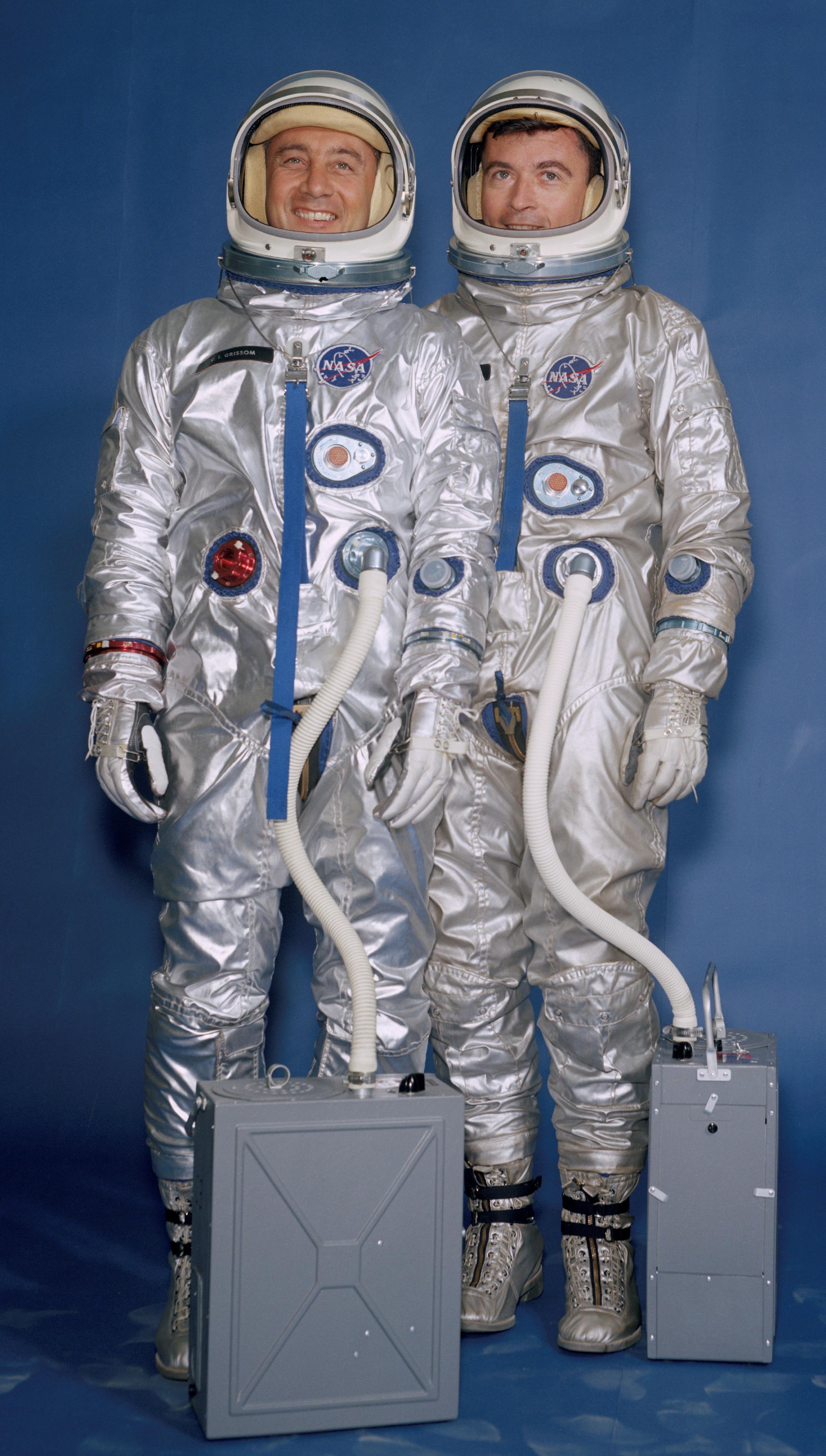
6. G4-C spacesuit
The G4-C was adopted for all subsequent Gemini missions to enable extravehicular activities. Ed White can be seen above wearing the spacesuit in an image taken during the first US spacewalk.
7. Modified G4-C
The G4-C was later outfitted with an USAF Astronaut Manuevering Unit, a device which expeled hot gasses to produce forward propulsion via Newton’s third law The astronauts are protected against the hot gasses by additional layers of material and an outer Chromel R cover.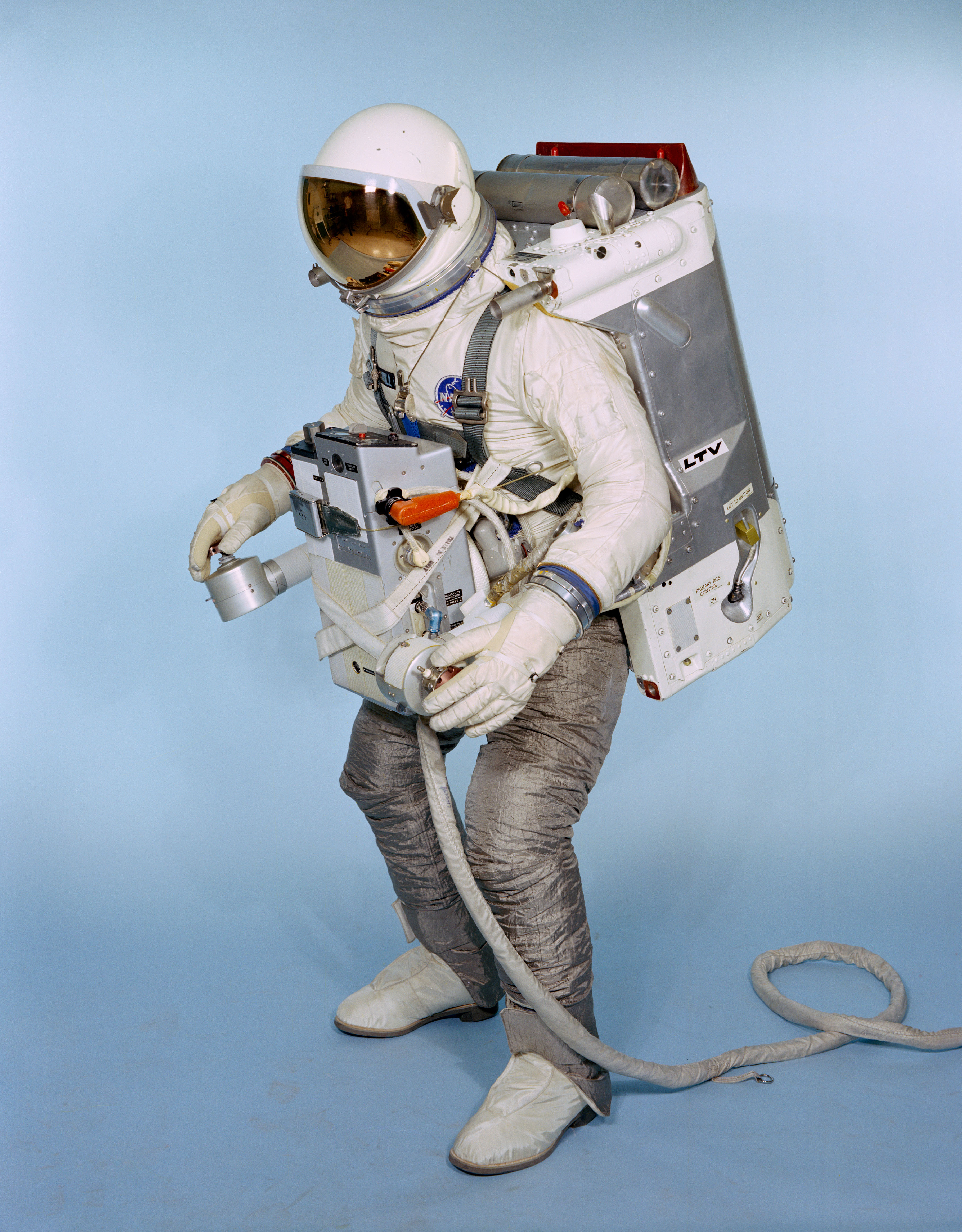
8. G5-C
The G5-C was designed as a removable suit to be worn during Gemini VII 14-day flight. It included a zippered hood with a faceplate in place of a helmet and additional adjustment zippers within.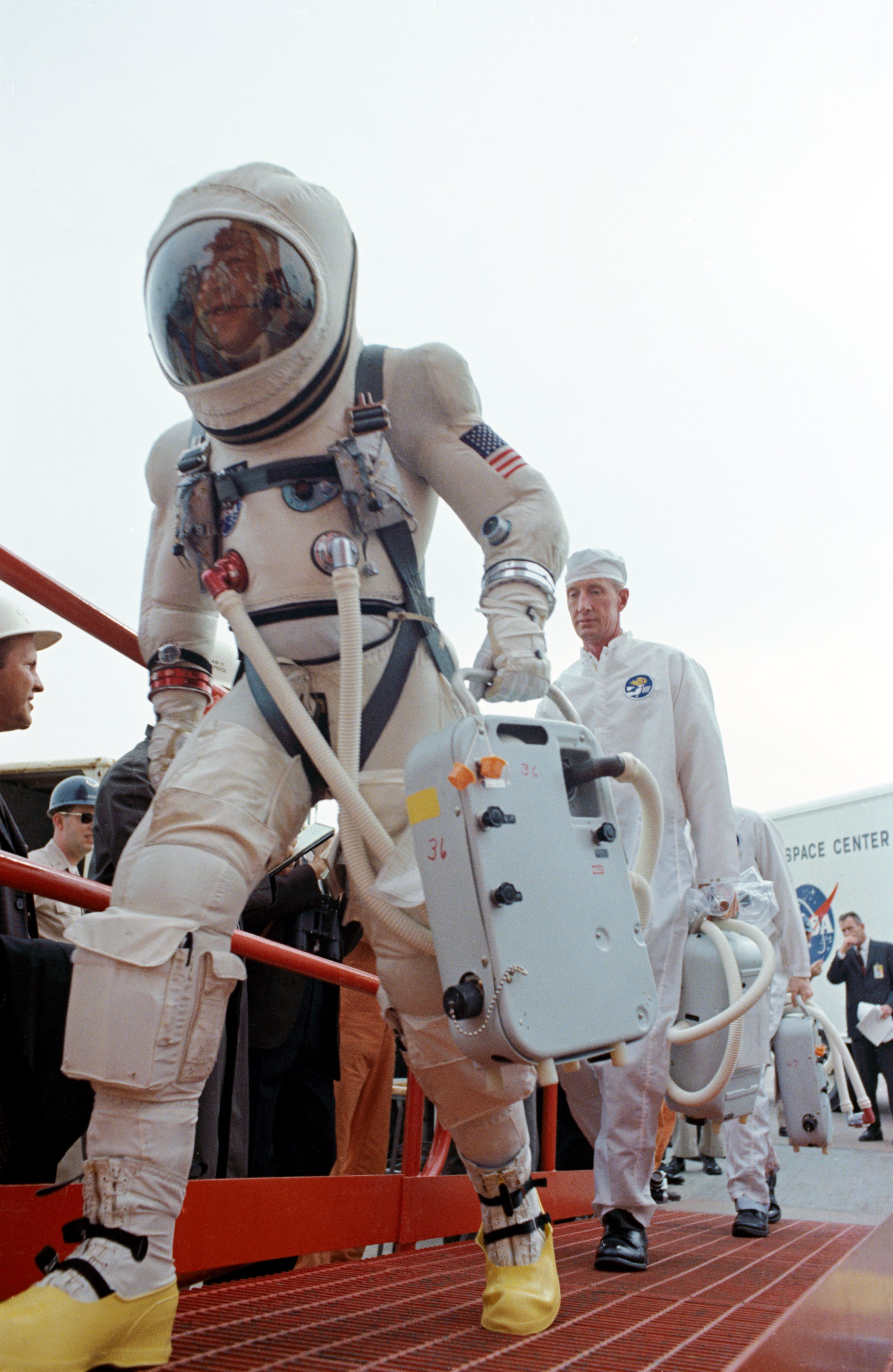
9. A1C IVA suit
The A1C IVA suit was adopted during the onset of the Apollo missions, in which NASA elected to use a modified G3-C suit for the early Block 1 flights. The final A1C IVA design stemmed from a design competition held by NASA for a lunar EVA suit.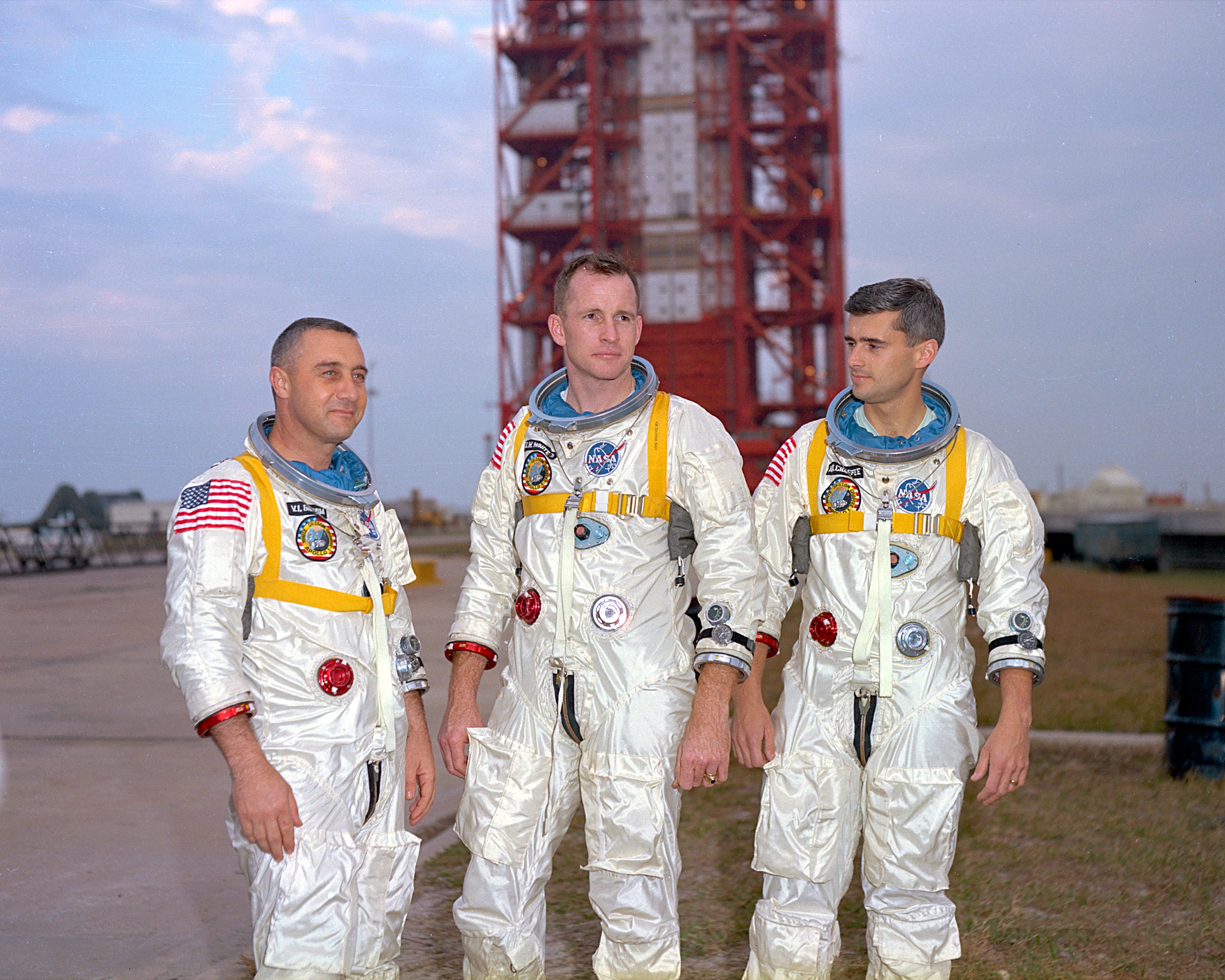
Some more A1C suit images
10. A7L
Following the Apollo 1 fire that claimed the lives of the three crew members picture above — Gus Grissom, Edward White, Roger Chaffee — NASA contracted ILC Dover to build A7L. Seen below is a picture of Buzz Aldrin wearing his A7L on the Moon’s surface.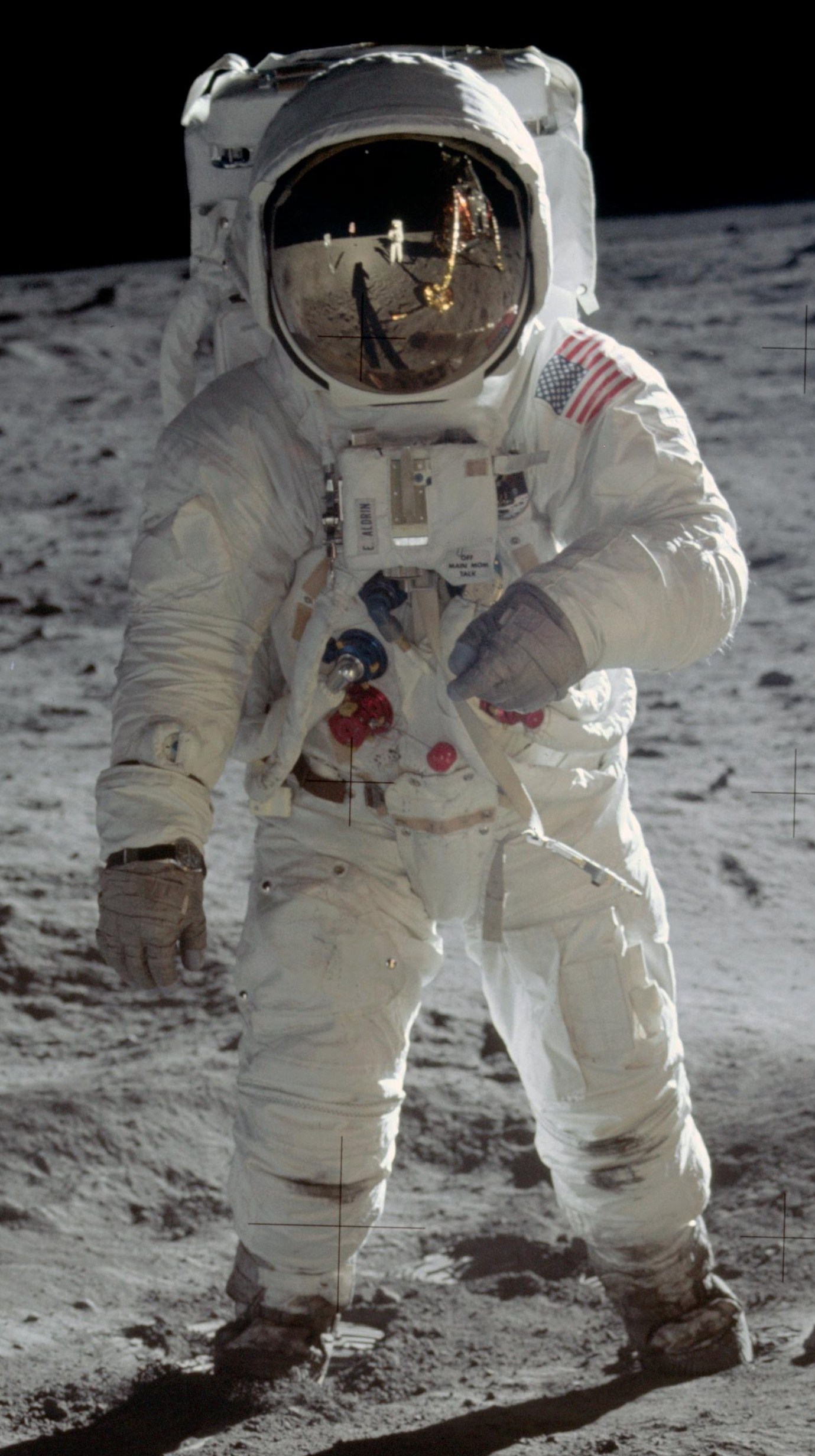
11. A7LB
A modified version of the A7L, the B variant was adopted during the Apollo 15, 16, and 17 longer-duration missions. The suits featured new joints at the waist and neck, in addition to rearranged hose connectors that would allow the astronauts to comfortably sit and drive the Lunar Roving Vehcile. Below: Gene Cernan wearing his A7LB during Apollo 17.
12. A7LB version 2
A later version of the A7LB was modified for astronauts aboard the Skylab space station to account for their short duration spacewalks. The suit was updated with an umbilical chord and an emergency oxygen supply carried on the astronaut’s right thigh.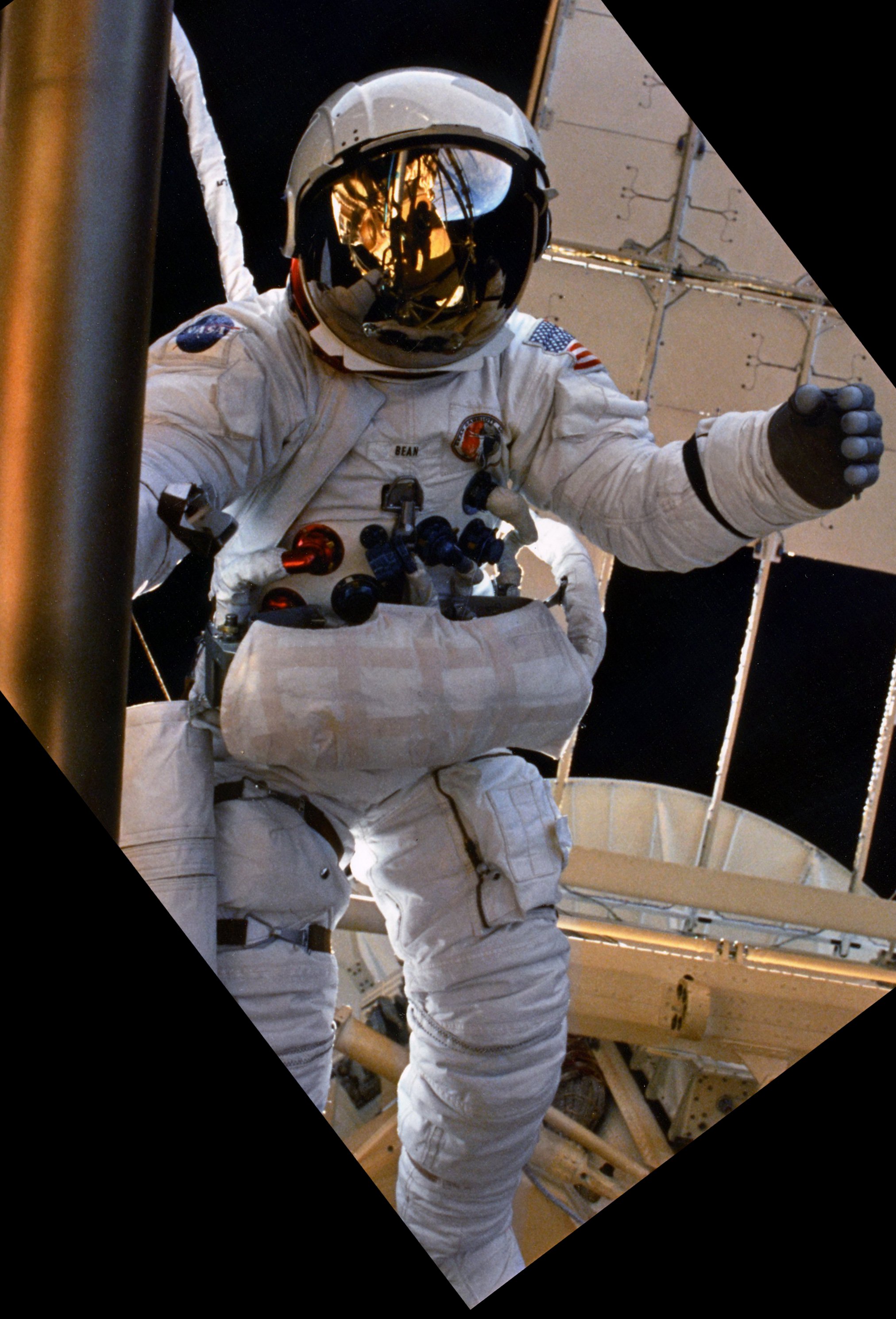
13. The Shuttle Ejection Escape Suit
The suits below were worn from the STS-1 to STS-4 until the shuttle could be declared fully operational. The suits protected astronauts in ejections up to Mach 2.7 and 80,000 ft.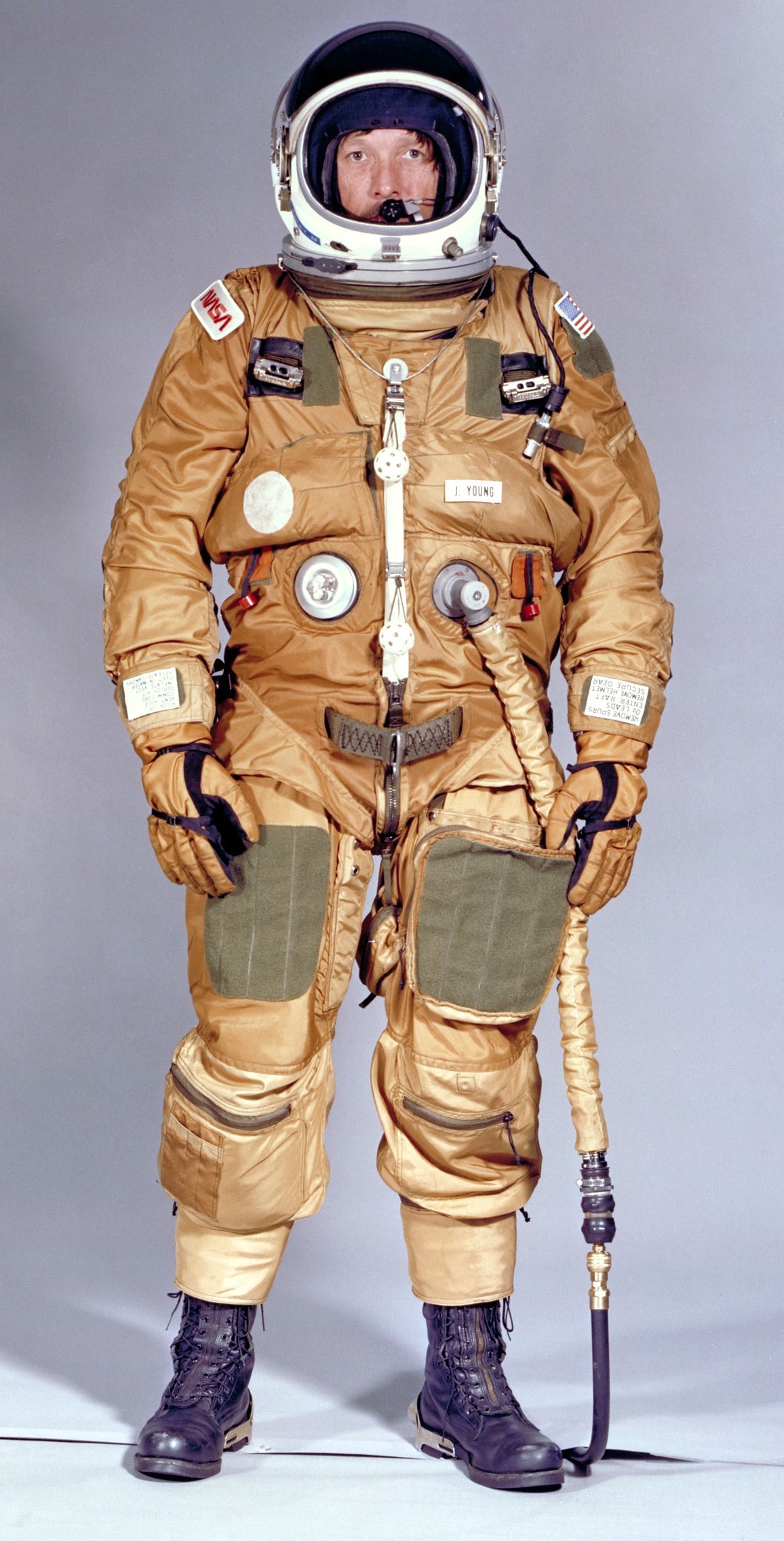
14. Launch Entry Suit
The Launch Entry Suit is a partially pressurized suit that was adopted beginning with the STS-26 mission.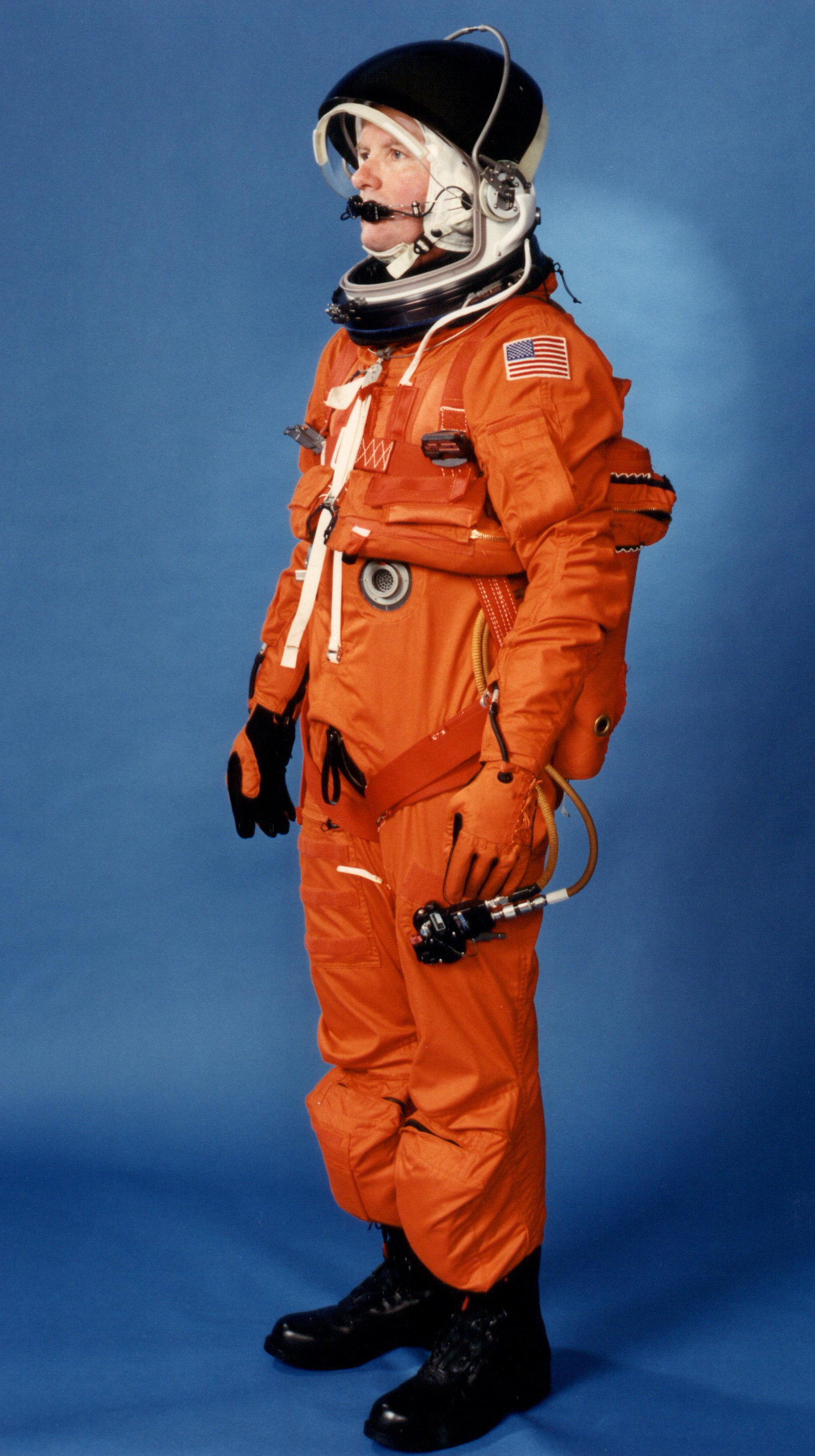
15. Advanced Crew Escape Suit
Introduced after STS-65, the Advanced Crew Escape Suit was a fully pressure suit whose design was based on the MC-2 and Gemini spacesuits.
16. The EMU
Introduced in 1981, the Extravehicular Mobility Unit (EMU) was designed to perform spacewalks from the shuttle, featuring a hard upper torso and soft lower torso and arms.

17. EMU ISS version
The EMU was altered for use aboard the International Space Station through a modular design upgrade that would allow one suit to be adjusted for multiple crew members, as well as a Simplified Aid for EVA Rescue (SAFER) propulsion pack.
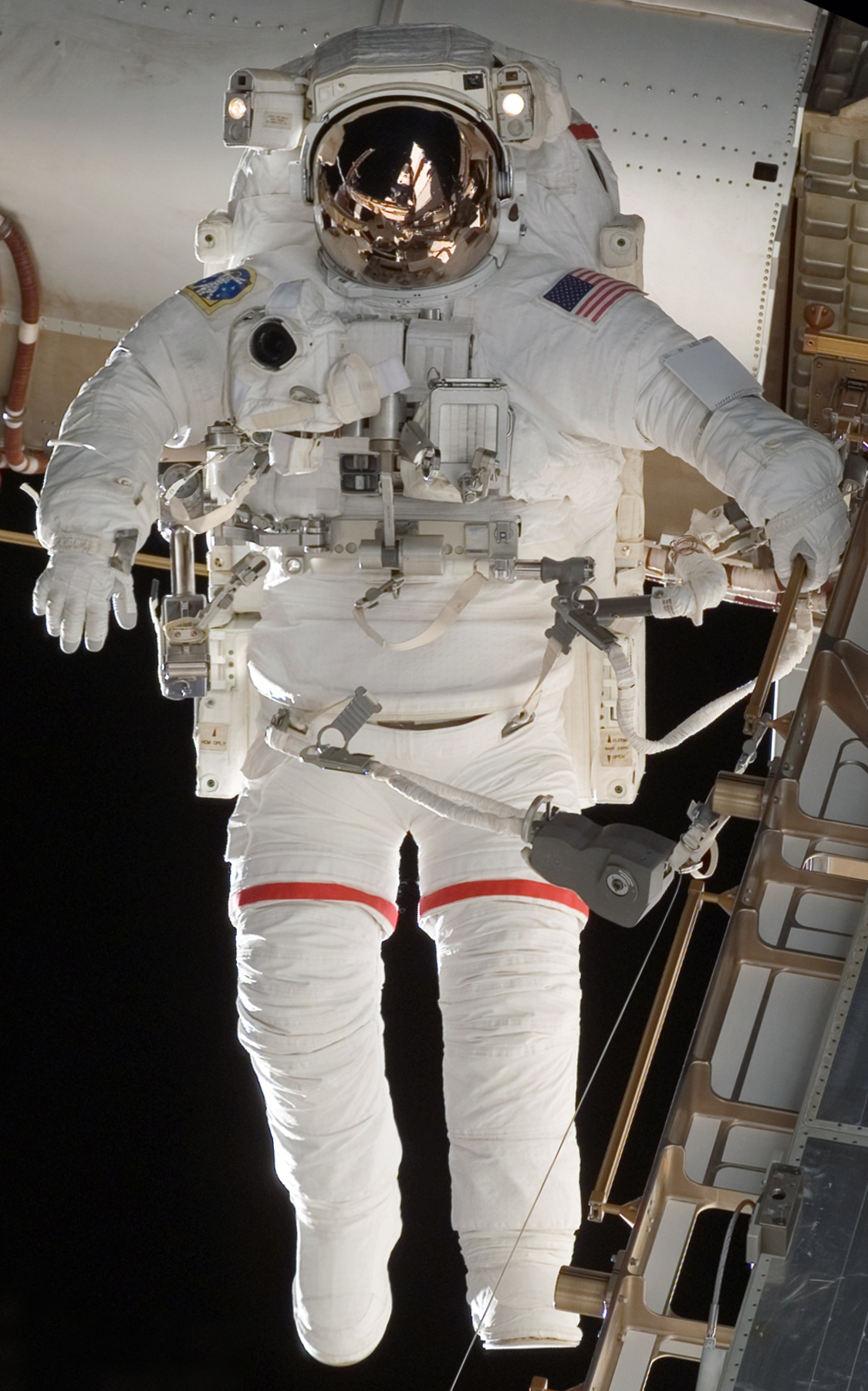
18. Z-1
Eerily resembling Toy Story’s Buzz Lightyear, the Dover built Z-1 prototype suit is primarily made of soft components with a suitport entry interface.
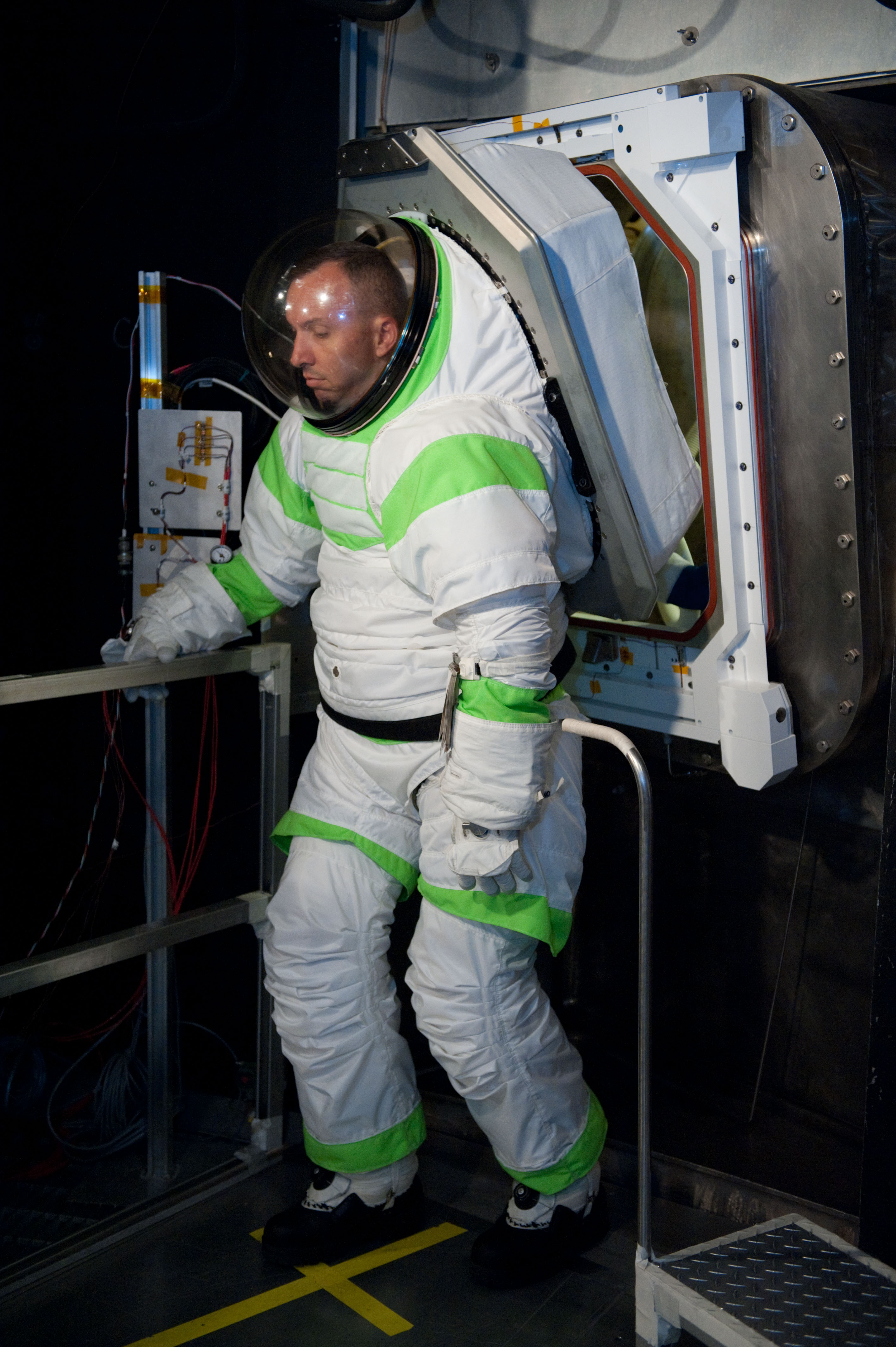
19. Z-2 prototype
NASA awarded ILC Dover a $4.4 million contract to create the next generation of spacesuit featuring hard composite material for long-term durability. The new suit is scheduled to be tested in a human-rated vacuum chamber and the Neutral Buoyancy Lab in 2015.

Advertisement
Learn more about Electronic Products Magazine





